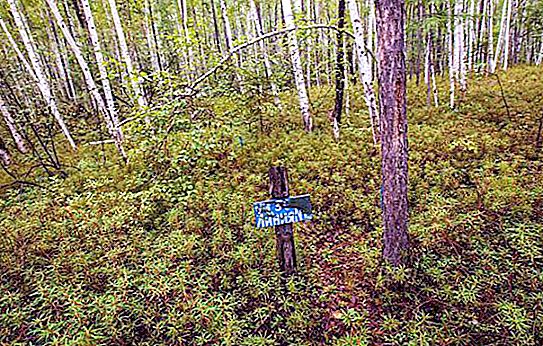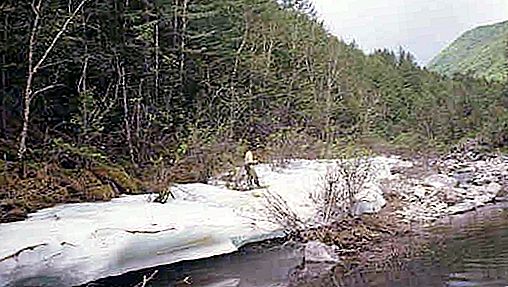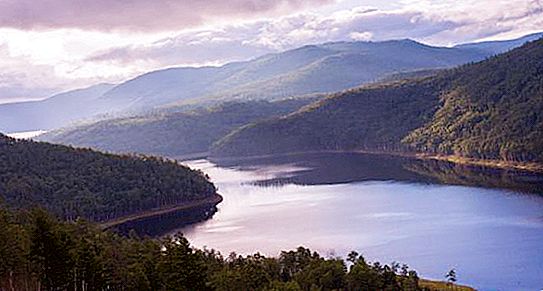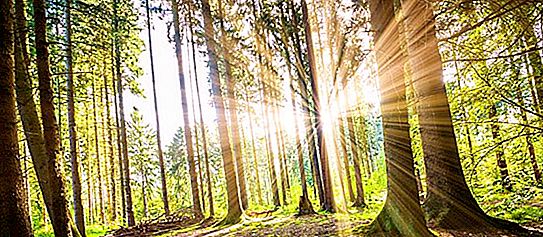Russian lands are famous for their natural beauties. In order to protect them from the negative influence of man, protected corners are being created at the state level. One of such places is the Zeysky nature reserve, whose employees managed to preserve nature almost in its original form.
Location and Terrain
So where is the Zeysky Nature Reserve? Its territory belongs to the Far Eastern Federal District and is located near the border of the Russian Federation with China. Administratively designated as the Amur region.
The reserve occupies the eastern part of the ridge with the mysterious name Tukuringa, where a narrow valley of the Zeya River crosses the mountainous area, after which the object is named. Not far from it is the town of Zeya, which has an ancient history.
The reserve area is a little over 82 thousand hectares. Its relief is characterized by steep slopes (up to 70 degrees) and flat watersheds that rise 400-600 meters above the bottoms of river valleys. The river channels are characterized by great depth, an abundance of rapids, hanging estuaries and waterfalls.
History of the reserve
Zeysky Nature Reserve was created on the initiative of the outstanding Soviet geologist Alexander Stepanovich Khomentovsky. In general, the question of creation was still in the twenties of the last century, but the matter got off the ground only in the sixties. The reserve was born in 1963.
The main goal of the creators was to protect the reference area of the mountainous area and its study. In addition, scientists here are monitoring the impact of the Zeya reservoir on natural complexes.
Work in the reserve is carried out by foresters, foresters and their assistants, who on foot, on horseback, in boats or boats regularly examine the territory entrusted to them and monitor the order.
Climatic features
The climate in the reserve is moderately cold. The average annual temperature is minus four to six degrees. In winter, the thermometer drops to thirty degrees below zero, and in the summer it rarely rises above eighteen.
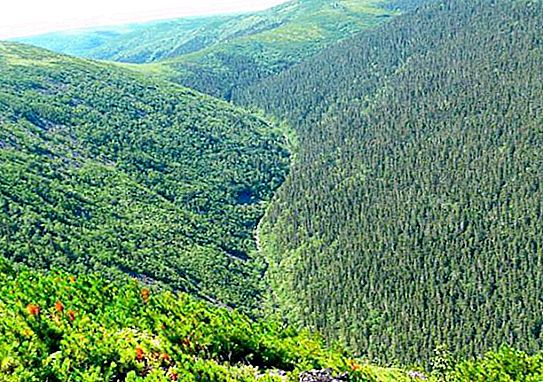
Winter is clear, low wind, dry. Little snow falls, but since the low temperature is stable, it does not melt and lies all winter, from October to April. The height of the snowdrifts in the plains and foothills reaches twenty centimeters, but the closer to the sky, the more snow. With each kilometer, the height of the cover increases by thirty centimeters.
In the spring, winds intensify on the territory of the reserve, but little rainfall also falls. The air temperature is kept cool enough. In the summer the Zeysky nature reserve surprises its guests with a striking phenomenon - bird cherry blossoms in the upper reaches of the rivers against the background of un melted ice. In general, the summer period in most of the territory is characterized by warm and humid weather. Autumn is dry and windy. The least rainfall occurs in October.
Soil in the reserve
The soil cover in the reserve cannot be called fertile. The eastern part of the ridge borders the permafrost zone, and this affects the soil. The frozen layer does not let water through; as a result, the cover of the mountain slopes is overdried and stony. And the soils of hollows and hollows, on the contrary, are oversaturated with moisture, which also does not contribute to fertility.
Ponds
All rivers crossing the territory of the reserve belong to the basin of the Zeya river, on which the Zeya reservoir is built.
Before the creation of the man-made sea, the river was characterized by an obstinate character. Moving on it was almost impossible due to the huge speed of the current and the large number of rifts and rapids. The danger of traveling along the river is evidenced by the names of its sections: Bolshoi and Malye Lyudoedy, Chertova Pechka, etc.
Once in the summer, Zeya overflowed the coast, and nearby settlements found themselves under water. Through the construction of the reservoir, man managed to tame the obstinate. Today Zeya is navigable and brings much more benefits than before.
The total area occupied by water in the reserve is 770 hectares. These are mainly rivers. There are swamps.
Vegetable world
The vegetation zones of the reserve are a mountain-tundro-boreal complex. In the lower part of the ridge there are light larch forests with a rosemary veil; slightly coniferous forests with rare interspersed mountain ash, woolly and stone birch (the land here is covered with green moss); and at the very top of an impassable wall a cedar dwarf grows.
Those slopes of the ridge that face the reservoir are characterized by the Manchurian flora. Plateau-like watersheds are poor in woody vegetation — they are sections of tundra covered with shrubs and grasses.
Zeysky Nature Reserve is known for thickets of Ayan spruce, which is amazing for its size. Trees reach thirty meters in height and a meter in circumference. They live for four hundred years. Some places where there used to be spruce, destroyed by fires, are now overgrown with larch Gmelin.
There are few meadow vegetation in the reserve, and it is also often the result of fires when purple reed and Sugawara appear on the site of burnt thickets of Ayan spruce.
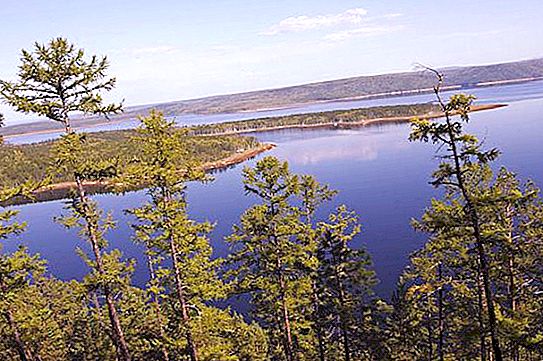
The Tucuringra ridge can be called the real kingdom of mushrooms. There are already 158 species. Some of them decompose dead wood. Of the edible varieties, the following are found: porcini mushroom, common boletus, red boletus, oily larch and yellow, real breast, saffron mushroom, white roe.
Here, 155 species were found here; twenty-one species of bryophytes are also found. 637 varieties of vascular plants can be found in the reserve.
Of the shrubs, rosemary, Daurian rhododendron, blueberries, rose hips, spirea are medium and winding. In the swampy and damp forests and spruce forests, various sedges are found, aconite of Lyubarsky, common sour oxen, Labrador perennial, Asian Volzhanka, double-leaf lantern, pear, and fern. In dry forests, feather grass, Japanese buttercup, Amur carnation, fingernail violet, several types of geraniums, mountain litter, Tatar aster, radiant goat-eye grows.
Zeya Nature Reserve: Animals and Birds
Before the creation of the Zeya reservoir, the diversity of fish species in the lower and upper reaches of the rivers was quite different. After the Zeya River was blocked, the reserves of taimen, grayling, whitefish, and asp were quickly reduced. However, the amount of gudgeon, chebak, rotan and minnow increased.

The territory of the reserve serves as a staging post for many species of animals. In the highlands from north to south, representatives of the fauna of eastern Siberia move. And the river valleys that pass into the slopes let thousands of animals of the Amur animals pass through themselves, following, on the contrary, to the north.
Zeysky Nature Reserve is famous for its birds, namely a detachment of chicken, which are represented here better than anywhere else in the Far East. Among the most numerous species are hazel grouse, capercaillie, ptarmigan and ptarmigan, wild grouse, etc.
But ungulate animals are not many. You can name only a moose, roe deer, red deer and musk deer, and even from time to time a wild boar comes in.
Sable, ermine, and some other representatives of mustelids are ubiquitous in the reserve. Sometimes a lynx comes across. On the banks of mountain rivers, families of 3-5 individuals live wolves. A brown bear is found in all altitude zones. In general, the animal world on the slopes of the Tukuringra ridge is purely taiga.
Rare species protection
Work in the reserve is aimed at maximally preserving rare species of animals and plants, of which there are many.
If we talk about flora, then the Red Book of the Russian Federation includes, for example, a venus slipper (real and large-flowered), leafless chin, leaf-shaped peony, calypso bulbous, etc.
Among the birds, rare are the wild-boar already mentioned above, as well as the small swan, kloktun, mandarin duck, eagle owl, gyrfalcon, black stork and others.
Of the rare mammals, one can distinguish the predator, which is famous for the Amur Region and, in general, the Far East. This is an Amur tiger. Another endangered animal guarded here is a solonga.
